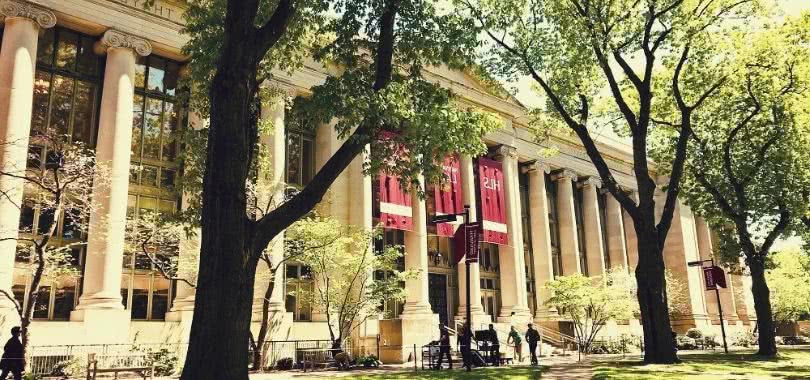So, what is a liberal arts college? They’re not always household names. For many, the first time you hear the name of a liberal arts college is when it comes up in your college search. However, these colleges provide amazing education, engaged communities, and superb preparation for the future. (And, most importantly, not “just arts” in terms of academic programs and majors.)
Here are 10 reasons to consider attending a liberal arts college.
1. Undergraduate Focus
The majority of liberal art colleges only have undergraduate programs. Larger universities, such as research universities, spend a lot of their time and energy on research and graduate students. Liberal arts colleges focus on teaching their undergraduate students. Everything that happens on campus revolves around the student experience—inside and outside of the classroom.
2. Financial Aid
The majority of liberal arts colleges are private institutions with higher “sticker” prices than public universities. However, many of these colleges offer very generous financial aid, which means a lower net price. The financial aid offices are able to offer scholarships based on merit, talent, and need. Students often find they have to pay about the same, or possibly less, out of pocket to attend a private college than a public university.
3. Campus Community
There seems to be a lot more camaraderie at liberal arts colleges, especially your freshman year. With smaller student populations, students have the opportunity to meet most of the students at their college. These colleges are usually close-knit and the students spend a lot of time together, which can make it feel a bit more like “home.”
4. Student Activities
Liberal arts colleges usually have fewer student organizations and activities than larger universities, but participation tends to be higher. There are more opportunities for leadership positions because there are fewer students.
The smaller communities found at these colleges also allow students to participate in a student organization in which they are not majoring. For example, non-journalism majors may be able to write for the student newspaper. At larger universities, the student newspaper, theatrical productions, or campus radio stations are almost entirely reserved for students studying in those fields.
5. Access to Professors
Classes, including introductory courses, are taught by professors at liberal arts colleges. At larger universities, many courses are taught by teaching assistants who are typically graduate students with very little teaching experience.
Since liberal arts schools tend to be smaller, the classes also tend to be smaller as well. And, because each class is usually taught by a professor, this means they generally have the opportunity to spend more quality time with their students, getting to know them, evaluating and critiquing their work much more closely, and serving as mentors.
6. Small Classes
Average class sizes are usually less than 30 students. This gives students the opportunity to participate in class and get to know their classmates and professors. Students are not just a “face in the crowd” in their classes. If you like small class sizes, a liberal arts college may be the right size college for you.
While attendance is usually not part of a student’s grade when students are missing it’s usually obvious to the professor, which might encourage some students to attend more regularly.
A smaller class also allows professors to notice when students are struggling in a class and reach out to them before it’s too late in the semester.
7. Critical Thinking
Many of the courses at a larger university, especially the introductory courses, have a lot of students. These classes are usually lecture-style where the information is told to the students. However, liberal arts classes are usually smaller and include classroom discussions almost on a daily basis. Students have the opportunity to hear different perspectives, communicate their thoughts and ideas, and think critically.
8. Well-Rounded Education
Many academic programs at large universities are regimented with very specific course requirements and do not allow students many opportunities to explore other areas of study.
However, liberal arts colleges allow students to take classes in many disciplines. By definition, these colleges provide students an overview of the arts, humanities, mathematics, natural sciences, and social sciences. A liberal arts degree is generally meant to prepare students for a variety of career paths versus a specific career path.
In addition, these colleges tend to give students more freedom with their studies. Students can sometimes create their own programs that meet their individual interests.
9. Preparation for Graduate School
More liberal arts college graduates attend graduate school than other students. Liberal arts colleges tend to prepare their students well for graduate-level work because they focus on class participation, writing papers, and thinking critically.
In addition, students at these smaller colleges often have much more opportunity to participate in research activities as an undergraduate student than those at research universities.
10. Employers Value Liberal Arts Education
Liberal arts students spend a lot of time communicating verbally and in writing. Students at larger colleges don’t always have this same experience (depending on their major and classes).
The intimate nature of most liberal arts educations prepares future employees for all areas of a career. Students will have analytical, communication, and team-working skills that they need to succeed. Companies are hiring liberal arts majors more frequently now because of these skills.
Not all liberal arts colleges are exactly the same. But, in general, this gives you a good idea of why many students choose these schools. Many times, a smaller campus with fewer students lends itself to an easy transition from a high school, where your classes may have been about the same size.
Plus, there are many other great things that come along with a liberal arts education. Consider all of your options carefully to figure out which kind of institution is right for you!
Use College Raptor to discover personalized college matches, cost estimates, acceptance odds, and potential financial aid for schools around the US—for FREE!








I like the points you make about receiving a well-rounded education. I feel like that’s the best benefit of liberal arts colleges. Like you say, they give students more freedom with their studies. That makes the students learn a lot of different abilities.
Where are your sources from because my group and I are using this for a presentation?
If you scroll down to the bottom of the page you’ll see the About the Author section. This particular original piece was written by a guest blogger of ours, but you can find a link to her counseling website there if you would like to reference her site directly. We hope this helps!
It sure is interesting to know that a liberal arts college will be able to provide students with a close-knit community. My son wants to pursue a career in photography in the future. I would think that the type of community that these type of colleges offer can help him network and plant seeds as early as now.